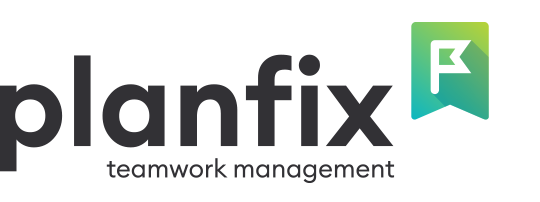
At first glance, setting up a custom sales funnel in Planfix might feel like putting together IKEA furniture without instructions. But don’t worry, we’ve got you covered! There are two options: You use our ready-made solution or roll up your sleeves and do it manually. To ensure you know which is best for you, we’ll take a look at both in more detail.
Sales Funnel
Think of the sales funnel as your GPS for customer interaction. It not only helps you avoid those common “sales potholes,” like deals that fall through at the last minute, but helps guide you to smoother, more predictable outcomes. If you want to get where you’re going fast (and with minimal problems), a sales funnel is essential.
What Exactly Is a Sales Funnel?
Imagine you’re fishing. In this case, the funnel is all the things you’re doing to attract potential customers. Sometimes you’re using a big net, and sometimes you’re using a single rod and reel. But like fishing, not every stage is smooth sailing. Sometimes, you need to adjust your approach, change bait, or simply read your customers better. Usually, the sales funnel is divided into several phases, so you know when to intervene and make the necessary adjustments.
Why Does Your Business Need a Sales Funnel?
A well-established funnel is key to maximizing your catch. It not only helps you see where you’re losing customers, but where you should focus your energy.
Before long, you’ll be ..
- Streamlining the customer journey — Your funnel helps you track customer interactions from the first “Hello” to the last “cha-ching!” This ensures everything is organized in the CRM, and no one slips through the cracks.
- Sorting leads like a Pro— MQL, SQL, SAL — no, these aren’t the latest TikTok trends. They’re different leads you can quickly sort according to the customer’s buying readiness. That way, you don’t waste energy on the wrong people.
- Mastering resource allocation — Your funnel can help you better recognize what your team needs to focus on. That means less guessing and more doing.
- Forecasting Future Sales — With your sales funnel at your side, you’ll be able to predict sales trends like the next big iPhone release. (Okay, maybe not quite that big, but you get the idea)
- Segmenting your customer base — Sales is all about that personal touch. A segmented funnel helps you develop customized strategies for each type of customer — because no one likes to feel like a fish lost at sea.
- Improving conversion rates — If you know where deals are failing, you can adjust your approach to close the deal more often. This can literally redefine your entire sales game!
- Enjoying greater customer loyalty — When your funnel helps you keep things personal, your customers trust you more. More trust = more loyalty.
In the end, setting up your funnel correctly might take some work, but once it’s done, you’ll be well on your way towards long-term success.
Laying the Groundwork: Before You Build
Before you throw yourself into building your funnel, you should take a moment to stand back and make a plan. First, you need to lay a solid foundation. Otherwise, your funnel will be about as helpful as a chocolate teapot. It’s also essential that you know your target market and your ideal customer. Don’t just guess who your customers are – do your homework. Understand their problems, what they need, and how you can solve them. Remember the fishing metaphor – the right bait for the right catch!
Set up lead generation channels. Just as you wouldn’t try to fish in a puddle, you shouldn’t waste time on channels that don’t deliver good leads. Take some time to find the channels that work (social media, ads, events — whatever yields the best results!).
Implement a lead tracking system & build your sales funnel stages. Nobody likes to track leads manually. That’s why we’ve made it easy to set up a lead tracking system in Planfix and let the system do the heavy lifting.
Define stages & processes. Finally, it’s important that you break down your sales process into key steps and smooth out the transitions. You’ll be amazed at how much chaos you can avoid with a clear roadmap.
A Ready-Made Solution
For those of us who like to take the easy way out (no judgment here), Planfix has a ready-made solution called “CRM: Customer Request Management”. It’s like making your own pizza! Just grab the dough, choose the toppings, and you’re good to go. Here’s how:
- Go to Account Management > Solutions > Install Solution.
- Choose the Sales & CRM category from the list of pre-made solution categories.
- Pick the solution CRM: Customer Request Management and hit install. Done!
Manual Setup: For the DIY Enthusiast
If you’re more of a hands-on person, you can also set up your sales funnel manually. It’s a little more involved, but you’ll get a funnel tailored to your needs. To provide an accurate example of how this might work, let’s use a cosmetics store as an example.
Stage I: Request
Start by figuring out what needs to be digitized. Currently, the business process consists of:
- A cosmetics catalog
- Orders that someone receives and fulfills
- Order processing
In a cosmetics store, it’s mainly about the orders. So, we create an “Order” object in Planfix with all the details, including name, deadlines, and the people responsible for each sales funnel stage (sales manager, courier, etc.).
To create a new object, go to Account Management → Objects → New Object. In the object card, add the fields that sales managers need to work with the request:
- Name of task creation – Here, you can add variables such as task number and customer name to help you keep things organized.
- Task description – Use a dynamic block to display all the customer’s orders and calculate the total amount. Trust me, this will save you hours of time down the road.
- Delivery address – Set this field as “Location” to ensure you don’t accidentally send that face cream to the wrong side of the country.

Stage II: Life Cycle of the Request
Here is where we map out the stages. It works like this:
- The customer places the order.
- The manager confirms it.
- The manager sends the invoice and waits for payment.
- After payment, the order is prepared.
- The courier picks it up.
- The customer receives it.
- Deal closed. (Or canceled, if things don’t work out.)
In Planfix, the Object has a standard set of statuses, each of which is suitable for describing the basic stages of any process.

Now, we’ll add unique stages specific to this request. Create a status “Expect payment,” enter a name, set the necessary settings, and save the status.

Next, we’ll follow the same process to create the statuses “Payment received,” “Order delivery,” and “ Refusal“
Here’s the status set we’ve come up with.

The last step is to display them neatly in the planner for easy management.
Stage III: Funnel Setup
Now comes the fun part! Because the easiest and fastest way to display a sales funnel in Planfix is to create a Kanban board based on the request statuses.

You assigned each status a list and voilà, you’ve got yourself a working funnel!
First, let’s set up a kanban for the sales department head, showing all the requests in the account. To do this:
- Rename the kanban to something like “My Funnel.”
- Arrange the lists in a convenient order.
- Add custom settings to each list, such as assigning responsibility for each stage.
Now the funnel looks like this.

Stage IV: Funnel for Employees
Of course, not everyone needs the manager’s view. That’s why we created a similar Kanban with different employee list settings. Here’s how to use it ..
- Create a copy of the funnel for the manager
- Activate synchronization for all lists in the new Kanban
- Add the condition “Assigner = me” to a list in the “Selection parameters ” block.

Thanks to synchronization, this condition will be automatically applied to all lists in the Kanban. That means that when employees now open the funnel, they only see their requests.

Your Planfix Sales Funnel: All That’s Left is to Build It!
And there you have it. We’ve just gone through the entire process of setting up a funnel in Planfix — from the basic to more advanced setups.
Remember that Planfix is all about customization. Whether you’re setting up automation or creating spaces for your team, there are loads of ways to make the system function exactly how you want it. So be creative, automate what you can, and watch your business thrive. You can do it!

